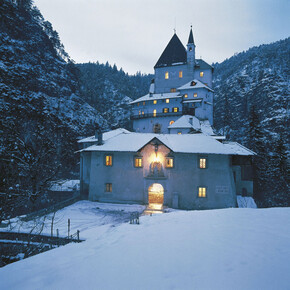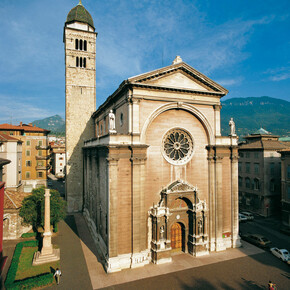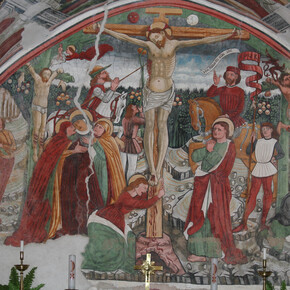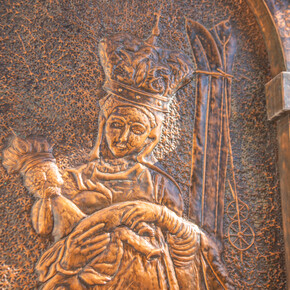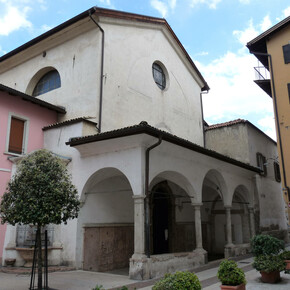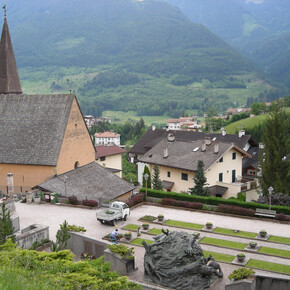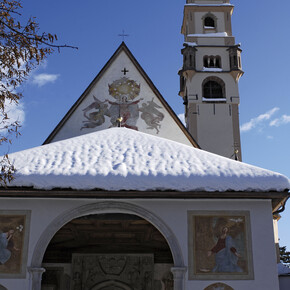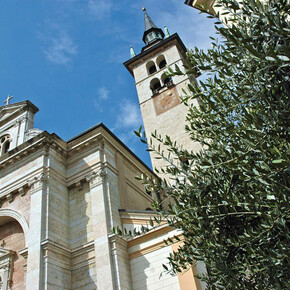San Vigilio church
The church of St. Vigilio is the expression of the typical spirituality of the Ladin folk culture.
A history of construction, reconstruction and expansion has marked the San Vigilio church, placed in an elevated position with a view over Val San Pellegrino and the Monzoni chain. Consecrated in 1164 by the bishop Adalpreto of Trento, as can be seen in the painting above the main entrance by Valentino Rovisi, it was consecrated once more in 1216 by the bishop Federico Vanga. In 1534, date that appears on the vault above the presbytery, there was a third consecration, after the Gothic reconstruction ordered by the bishop Bernardo Clesio a further rearrangement followed in the seventeenth century with the addition of the Carmine chapel and in the nineteenth century the enlargement of the nave and the construction of two chapels, one of which was external and was subsequently knocked down. The church we see today is the result of the umpteenth enlargement in 1929, from the plans of the architect Giovanni Tiella from Rovereto, who preserved the Gothic part and original apse. The inside with a nave and two side aisles contains other important work by Rovisi from the San Vigilio altar piece, to the canvases of "Sant’Antonio" and the "Last Supper" and the fresco on the vault of the Carmine Chapel, to the "Istituzione del Rosario", in the chapel in the right aisle. Here the beautiful wooden gold coated altar by Valentino Poschiavin (1715) can be witnessed. The main altar from the mid eighteenth century is also interesting by Martino Gabrielli with lateral statues of Giovan Battista Pettena. The frescoes presbytery are by Carlo Donati, while the crucifix, the stained glass windows, the wooden panels on the portals, the symbols of evangelists on the lateral portal and the "Annunciation" in granite on the main portal are by Cirillo Dellantonio (1876-1971), other famous artist from Moena. The third chapel holds the "Sacred Heart" of 1901 by Giovan Battista Chiocchetti.



